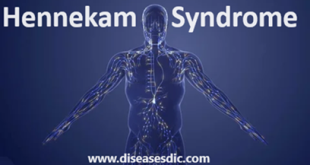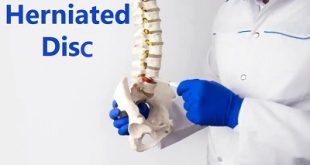Definition
Hypoplastic left heart syndrome (HLHS) is one of the most complex cardiac defects seen in the newborn. It is one of the most challenging to manage of all congenital heart defects. It is one of a group of cardiac anomalies that can be grouped together under the description single ventricle defects.
In a child with hypoplastic left heart syndrome, the structures on the left side of the heart are very underdeveloped. The left side of the heart gets the oxygen rich blood from the lungs. It then pumps the blood out to the body. The mitral and aortic valves are either completely “atretic” (closed), or they are small (hypoplastic). The left ventricle is tiny. The first part of the aorta is very small. Often only a few millimeters around.
This results in a situation where the left side of the heart is unable to support the circulation needed by the body’s organs. The right side of the heart is normally developed. The right side of the heart pumps blood to the lungs. Because the left side of the heart is so small, blood returning from the lungs to the left atrium must pass through an atrial septal defect (ASD) to the right side of the heart.
The right ventricle must then pump blood both to the lungs and out to the body. The patent ductus arteriosus, a normal structure in the fetus, is often the only pathway through which blood can reach the body from the heart. When the ductus arteriosus begins to close, the blood flow to the body will decrease, leading to very low blood flow to vital organs. This can lead to shock. Without treatment, hypoplastic left heart syndrome is fatal. This happens within the first hours or days of life.
Epidemiolog
Hypoplastic left heart syndrome occurs in 1 in 5000 live births. It is more common in males. It accounts for 1 to 3.8 % of all congenital cardiac malformations. The recurrence risk in siblings is 0.5%.
Hypoplastic Left Heart Syndrome Risk Factors
HLHS occurs predominantly in males. It is well known that there is a genetic predisposition for HLHS in some families, but a complete understanding of the genetic causes is unknown. Approximately 12% of infants with HLHS have associated extracardiac anomalies.
Genetic disorders associated with HLHS include Turner syndrome, Holt-Oram syndrome, Smith-Lemli-Opitz syndrome, Noonan syndrome, trisomy 13, trisomy 18 and trisomy 21.
Further investigations are needed to determine specific risk factors for HLHS which could lead to better prenatal screening and diagnosis.
Causes of Hypoplastic Left Heart Syndrome
- A child is born with this condition (congenital). Some congenital heart defects occur more often in certain families (genetic defects).
- In many children, HLHS occurs by chance. There is no clear reason for its development.
Symptoms
Babies born with hypoplastic left heart syndrome may seem normal at birth but become severely ill soon after birth. Babies may appear ashen or gray, have rapid and difficult breathing and have difficulty feeding. This heart defect is usually fatal within the first days or month of life unless treated.
- Grayish-blue skin color
- Rapid, difficult breathing
- Poor feeding
- Cold hands and feet
- Lethargy
Babies with this disorder could go into shock if the blood flow between the right and left sides of the heart is blocked because of the congenital defect. Signs of shock are abnormal breathing, dialated pupils and a weak and rapid pulse.
Hypoplastic Left Heart Syndrome complications
Without surgery, hypoplastic left heart syndrome is deadly, usually within the first few days or weeks of life.
With treatment, many babies survive, although most will have complications later in life. Some of the complications might include:
- Tiring easily when participating in sports or other exercise
- Heart rhythm problems (arrhythmias)
- Fluid buildup in the lungs, abdomen, legs and feet (edema)
- Growth restriction
- Formation of blood clots that may lead to a pulmonary embolism or stroke
- Developmental problems related to the brain and nervous system
- Need for additional heart surgery or transplantation
Diagnosis and test
Your child’s physician may have heard a heart murmur during a physical examination, and referred your child to a pediatric cardiologist for a diagnosis. A heart murmur is simply a noise caused by the turbulence of blood flowing through the obstruction from the right ventricle to the pulmonary artery. Symptoms your child exhibits will also help with the diagnosis.
A pediatric cardiologist specializes in the diagnosis and medical management of congenital heart defects, as well as heart problems that may develop later in childhood. The cardiologist will perform a physical examination, listening to the heart and lungs, and make other observations that help in the diagnosis. However, other tests are needed to help with the diagnosis.
Chest X-ray – A diagnostic test which uses invisible electromagnetic energy beams to produce images of internal tissues, bones, and organs onto film.
Electrocardiogram (ECG or EKG) – A test that records the electrical activity of the heart, shows abnormal rhythms (arrhythmias or dysrhythmias), and detects heart muscle damage.
Echocardiogram (echo) – A procedure that evaluates the structure and function of the heart by using sound waves recorded on an electronic sensor that produce a moving picture of the heart and heart valves.
Cardiac catheterization – A thin tube is inserted into the heart through a vein and/or artery in either the leg or through the umbilicus (“belly button”).
Pulse oximetry – A noninvasive way to monitor the oxygen content of the blood
Treatment for Hypoplastic Left Heart Syndrome
Initially, babies born with hypoplastic left heart syndrome will need a medication calls prostaglandin to keep the ductus arteriosus open and functioning. Patients will need a series of surgeries to direct appropriate blood flow to both lungs and body. Surgeons perform these operations in three stages:
Norwood procedure: Babies with HLHS need Norwood surgery within the first two weeks of life. During the procedure, surgeons:
- Build a new aorta by reconstructing the underdeveloped aorta to provide blood flow to the body.
- Place a shunt (tube) to reroute blood either from the right ventricle or the aorta to the blood vessel to the lungs (pulmonary arteries).
- Create a connection between the upper chambers of the heart to drain oxygen rich blood from the lungs to supply the body.
Bidirectional Glenn shunt operation: At four to six months of age, babies need a second operation. During the Glenn procedure, surgeons:
- Remove the old shunt.
- Place a new shunt to attach the superior vena cava to the pulmonary arteries. The superior vena cava (SVC) is a large vein that carries oxygen-poor blood from the upper body to the heart.
- Use this shunt to reduce the strain on the right ventricle by allowing blood to flow directly to the lungs.
Fontan procedure: Between 18 months and four years of age, babies need a final surgery. This final procedure allows all blood returning from the body to go straight to the lungs instead of mixing in the heart. During a Fontan procedure, surgeons will connect the inferior vena cava (IVC) to the pulmonary arteries. Similar to the SVC, the IVC is the large vein that carries oxygen-poor blood from the lower body to the heart.
Prevention
There’s no way to prevent hypoplastic left heart syndrome. If you have a family history of heart defects, or if you already have a child with a congenital heart defect, consider talking with a genetic counselor and a cardiologist experienced in congenital heart defects before getting pregnant.
 Diseases Treatments Dictionary This is complete solution to read all diseases treatments Which covers Prevention, Causes, Symptoms, Medical Terms, Drugs, Prescription, Natural Remedies with cures and Treatments. Most of the common diseases were listed in names, split with categories.
Diseases Treatments Dictionary This is complete solution to read all diseases treatments Which covers Prevention, Causes, Symptoms, Medical Terms, Drugs, Prescription, Natural Remedies with cures and Treatments. Most of the common diseases were listed in names, split with categories.







